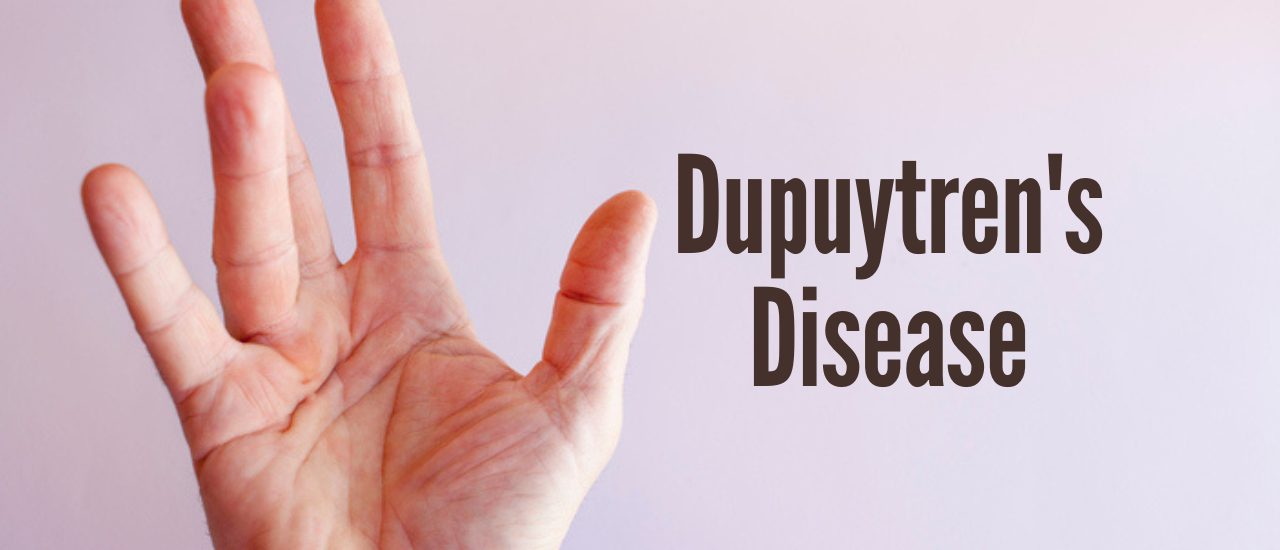

wordpress-seo domain was triggered too early. This is usually an indicator for some code in the plugin or theme running too early. Translations should be loaded at the init action or later. Please see Debugging in WordPress for more information. (This message was added in version 6.7.0.) in /home/sehatnagar.com/public_html/wp-includes/functions.php on line 6114
A painless ailment called Dupuytren contracture causes one or more fingers to bend inward toward the hand’s palm. The damaged fingers are unable to fully straighten. It typically appears in middle life or later, and it affects males more frequently than women. The tissue’s fibrous layer beneath the skin of the palm and fingers. Fascia thickens and tightens over time in Dupuytren’s patients. As a result, the fingers are drawn toward the palm and inward. The two fingers furthest from the thumb are most frequently affected by Dupuytren contracture. Most frequently, the ring and little fingers are afflicted. It frequently affects both hands. Occasionally, feet may also be harmed.
It is thought that Dupuytren’s contracture runs in families. The precise reason is unknown. Although diabetes, smoking, and heavy drinking may be linked to Dupuytren’s disease, many affected individuals do not. On rare occasions, it develops following surgery or an injury to the hand or wrist.
Dupuytren’s can make it challenging to hold heavy things and do simple actions like washing your face or putting on gloves because it permanently bends fingers into a fixed posture. The thumb and index finger are typically unaffected, therefore the ailment typically has little impact on your ability to write or handle small objects.
Over many years, Dupuytren contracture deteriorates gradually. A solid lump in the hand’s palm signals the onset of the illness. Although it could be a little uncomfortable, this bump doesn’t normally hurt. A Dupuytren’s contracture normally develops over years at a relatively slow rate. An illness’s warning signs and symptoms could include:
You could be more vulnerable to developing Dupuytren’s contracture if you:
A finger bent by Dupuytren’s contracture cannot straighten, even with assistance from the other hand, in contrast to a finger bent as a result of trigger finger. In minor situations, trigger finger can be treated gently. In contrast to Dupuytren’s contracture, trigger finger begins in the fingers. Trigger finger involves the tendons, whereas Dupuytren’s contracture involves the tissue. Thumb, index, and middle fingers are the most frequently affected by trigger finger.
Dupuytren disease is a genetic illness that typically has a complex origin but is frequently inherited in an autosomal dominant manner. It is linked to vascular disease, diabetes, alcoholism, smoking, seizure disorders, and HIV.
Although they are frequently stated as risk factors, hand injuries and jobs that require significant hand use of the hands do not actually cause the disorder. Dupuytren’s contracture is not caused by trauma, but it can exacerbate the condition and hasten the onset of hand abnormality.
But if you don’t treat Dupuytren’s, it’s more possible that your hand may eventually build thick structures that strain on your ring or little fingers, keeping them in an inactive position. If left untreated, this may make performing routine hand activities exceedingly challenging.
If Dupuytren’s contracture is severe and impairs a person’s range of motion and fine motor skills, it may cause a functional handicap. The index and middle fingers, however, are rarely affected, therefore writing ability is unaffected.
Fingernail And Toenail Fungus Problems
Inflammation Of Ear And Reasons That Builds Up Ear Infection
5 Best Exercises For Knee Problem To Reduce Pain